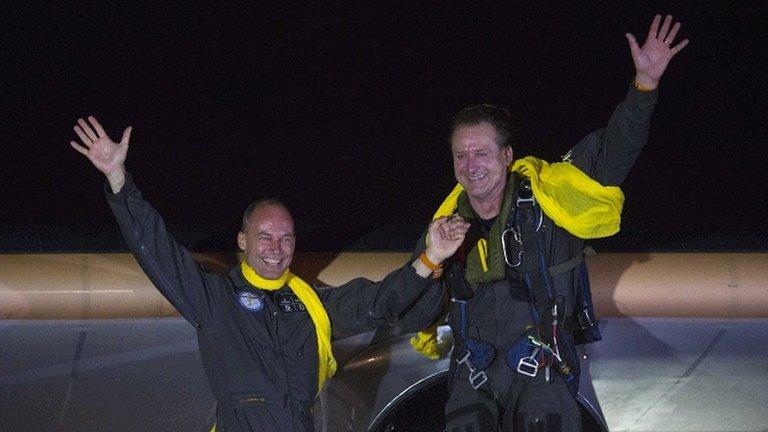Solar Impulse: Fuel-free aeroplane arrives in Myanmar
- Published
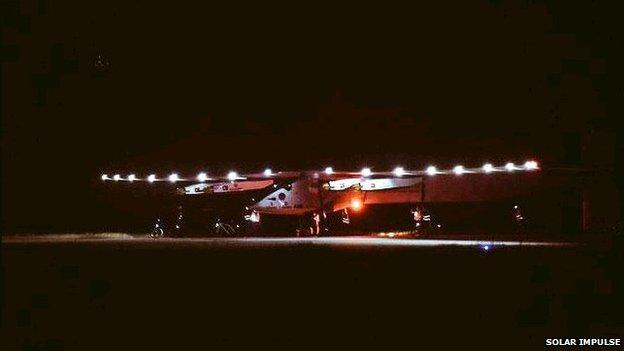
Touching down in Mandalay: Another landing in the dark for the solar-powered plane
Solar Impulse has arrived in Mandalay in Myanmar (Burma).
In doing so, the solar-powered plane has completed the fourth leg in its historic bid to fly around the world powered only by the Sun's rays.
Project chairman Bertrand Piccard piloted the vehicle, taking off from Varanasi in India early on Thursday.
The trip, which involved crossing the waters of the Bay of Bengal and a tall mountain range, was about 1,400km in length.
The aeroplane is a single-seater, and Piccard takes it in turn with project CEO Andre Borschberg to guide Solar Impulse on its circumnavigation of the globe.
So far, the pair have covered about 4,500km since beginning their adventure in Abu Dhabi on 9 March.
It will likely be another five months before they return to the United Arab Emirates, having crossed both the Pacific and Atlantic oceans in the process.
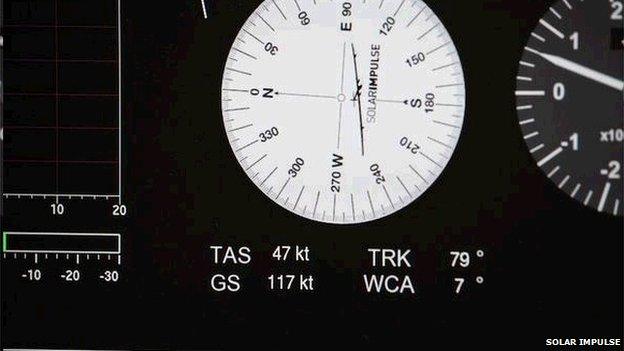
Solar Impulse achieves a groundspeed of 117 knots (216km/h; 135mph)
Thursday's flight followed on immediately from leg three on Wednesday. That was made across India, from Ahmedabad to Varanasi, with Andre Borschberg at the controls.
After a short "pit stop" of just a few hours, Bertrand Piccard was up in the air for what turned out to be another record-breaking flight.
This time, the mark set was for the fastest speed in a solar-powered plane.
"You just receive what nature wants to give you but it's true that today I was flying at 200km/h. I think that's the fastest speed with Solar Impulse," said Piccard.
That was confirmed by mission director Raymond Clerc.
"This time we touched 117 knots (216km/h). We were focused on the instruments, on our groundspeed indicator, because we knew it would come because we were in this jet stream. It's amazing."
The previous fastest speed was about 95 knots (175km/h; 110mph).
The next leg is to Chongqing in China, and the one after that goes to Nanjing. It is then that the team must prepare itself to make the big Pacific Ocean crossing to Hawaii.
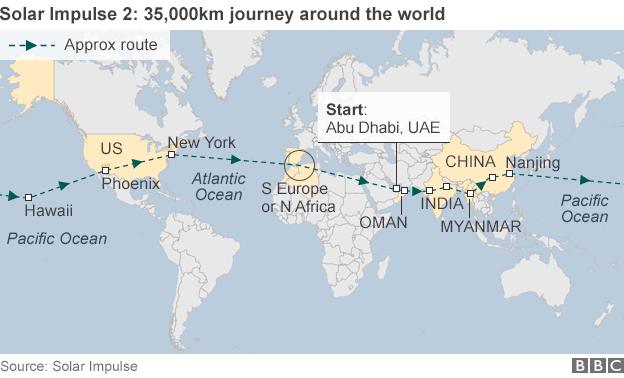
Solar Impulse has already set a record during this mission for the greatest distance covered in a single solar-powered flight.
This was the 1,468km attained on leg two from Muscat in Oman to Ahmedabad.
The wingspan of the vehicle is 72m, which exceeds that of a 747 jumbo jet airliner. It does, however, only weigh 2.3 tonnes.
Its light weight will be critical to its success over the coming months.
So, too, will the performance of the 17,000 solar cells that line the top of the wings, and the energy-dense lithium-ion batteries it will use to sustain night-time flying.
The Pacific and Atlantic crossings will require Solar Impulse to fly non-stop for several days at a time.
This will put tremendous stress on Borschberg and Piccard, who will be permitted only short cat-naps on these long legs.
The Solar Impulse venture recalls other great circumnavigation feats in aviation - albeit fuelled ones.
In 1986, the Voyager aircraft became the first to fly around the world without stopping or refuelling.
Piloted by Dick Rutan and Jeana Yeager, the propeller-driven vehicle took nine days to complete its journey.
Then, in 2005, this time was beaten by the Virgin Atlantic GlobalFlyer, which was solo-piloted by Steve Fossett.
A jet-powered plane, GlobalFlyer completed its non-stop circumnavigation in just under three days.
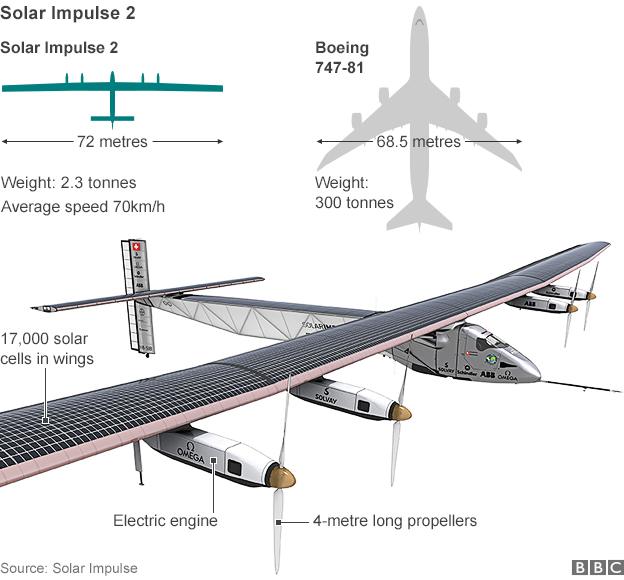
Jonathan.Amos-INTERNET@bbc.co.uk and follow me on Twitter: @BBCAmos, external
- Published18 March 2015
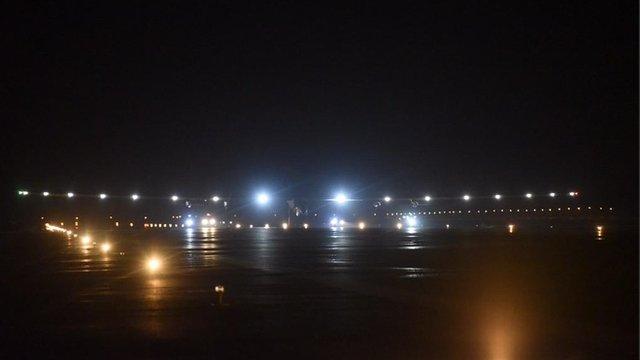
- Published10 March 2015
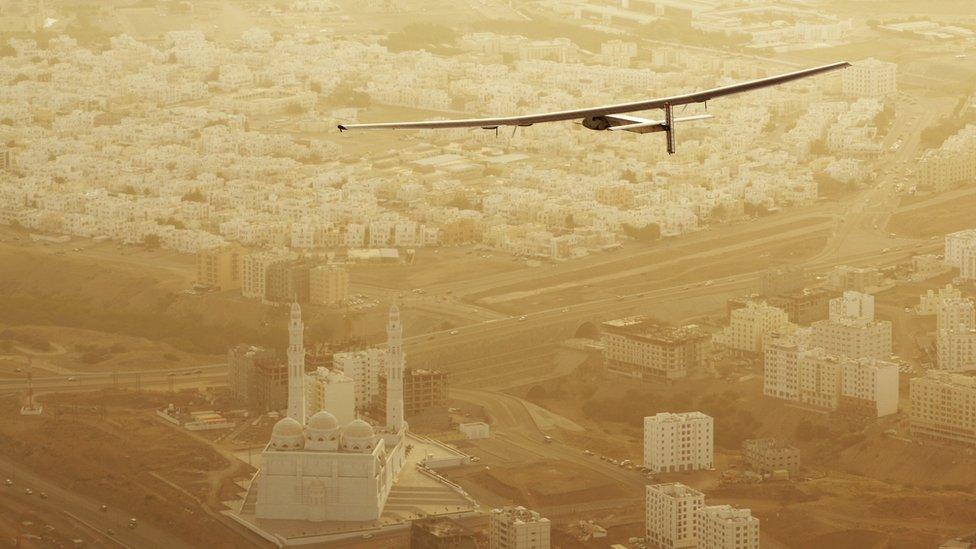
- Published9 March 2015
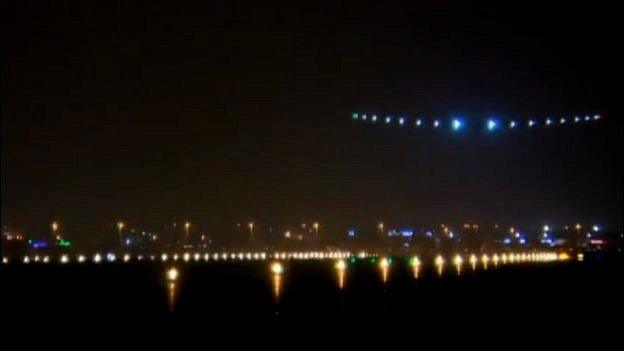
- Published2 June 2014
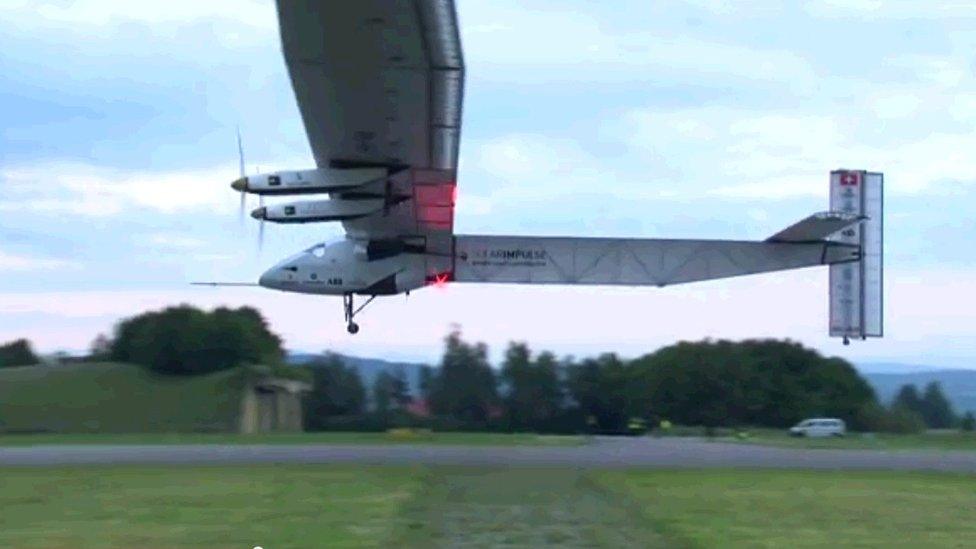
- Published7 July 2013
